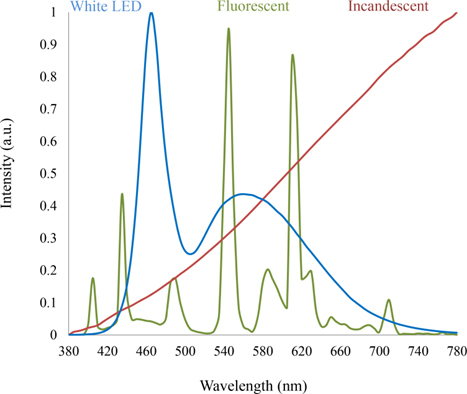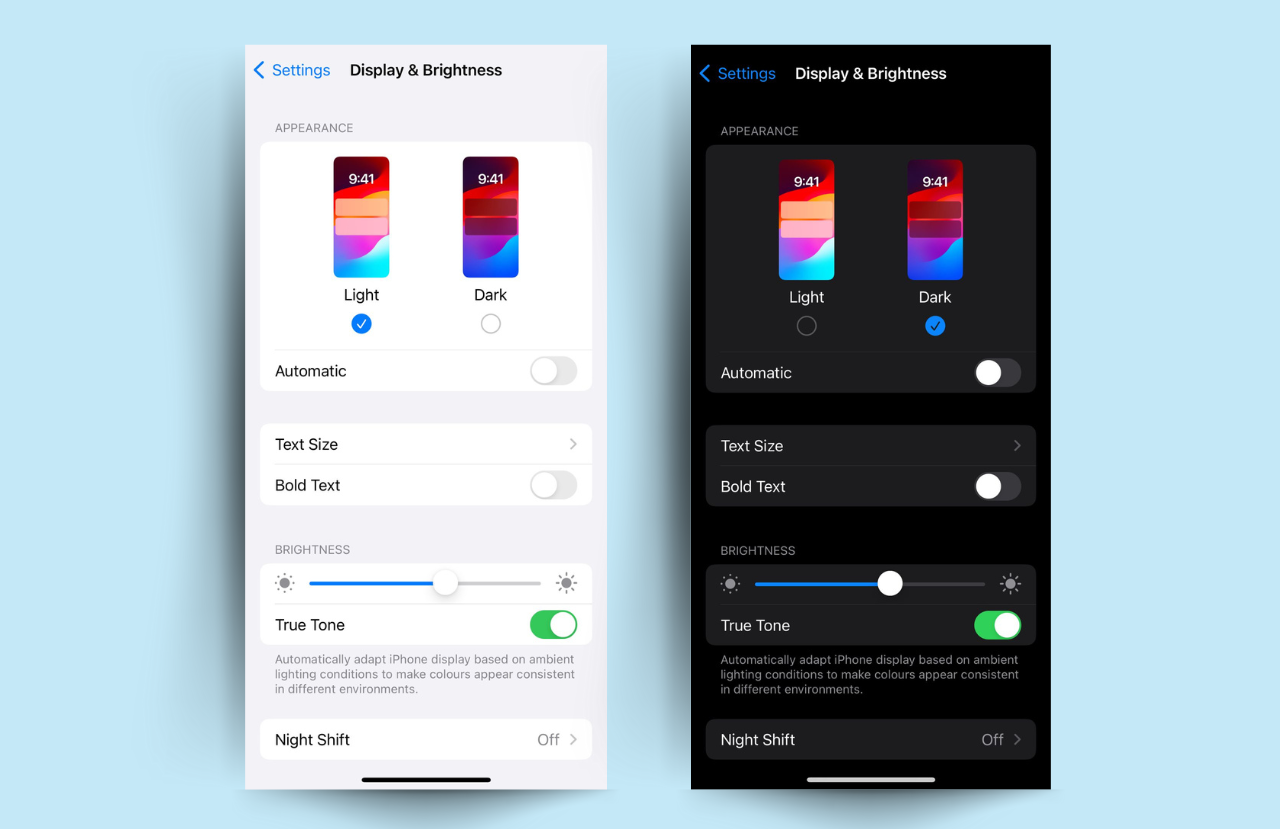More than 3.6 million individuals are utilising social media platforms regularly. By 2025, this figure is expected to reach an astonishing 4.41 billion. Every second, an estimated 63,000 searches are performed on Google. Reports show that as much as 80.76% of the worldwide population own a smartphone, with an even higher figure when taking feature phones into consideration as well.
While the advancements and ease of accessibility-related to technology in the modern-day does come with their advantages, there are risks and drawbacks too. One particularly important factor that we need to look at would be exposure to blue light - a type of light transmitted by mobile phones, tablets, computers, and televisions. While often a topic of interest, many people still do not realise just how this type of light affects them - which we aim to clarify in this post.
A Brief Overview Of Blue Light
Blue light is a term used to refer to a single entry in the spectrum of visible light. There are a total of seven primary colours that make up the light spectrum. These include red, orange, yellow, green, blue, indigo, and violet.

Collectively, they are often referred to as ROY G BIV. Light can be measured in two different ways, based on how it is emitted. These two measurements include:
- Wavelength
- Energy
Each of the colours that make up visible light’s spectrum has its own energy level and wavelength. These two measurements also affect the impact that light has on certain elements, such as the human body.
Below, we share a quick overview of the energy levels, as well as wavelengths associated with each colour that is represented in the visible spectrum.
|
Light Color |
Energy Level |
Wavelength |
|
Red |
1.91 eV |
650 nm |
|
Orange |
2.06 eV |
600 nm |
|
Yellow |
2.14 eV |
580 nm |
|
Green |
2.25 eV |
550 nm |
|
Blue |
2.75 eV |
450 nm |
|
Indigo |
2.48 eV |
500 nm |
|
Violet |
3.10 eV |
400 nm |
The factor that needs to be considered here is the specific wavelength that blue yields, which falls between the range of 400 and 500 nm. This is considered a short-wave light, which may yield the most significant amount of adverse effects for the human body. In addition to having a short-wave wavelength, this particular light also comes out with a relatively high energy level. The combination of these two factors is what makes the light a concerning factor and a point of interest for many scientific studies.
When looking at the effects of blue light on human health, it is also important to understand the primary sources. These include:
- Smartphones
- Tablets
- Laptops
- Computer monitors
- LED Lights
- Fluorescent bulbs
- Televisions (Particularly those with LED screens)
- Handheld gaming consoles
- E-book readers (Also called E-Readers)
While there are certain uses where blue light can be effective, this generally revolves around medical needs - such as the ability to treat acne with an artificial lighting system. In cases where people are consistently exposed to blue light through everyday activities, the wavelength and energy of the light can result in negative effects.
Effects Of Blue Light On Eyes

A majority of research papers that look at blue light focus on how this affects the human eyes. There are several studies that have looked at these effects. While further research is warranted to produce more accurate results, it is currently known that blue light is capable of penetrating the eye more than other colours. Here, the sun is considered a primary source of blue light, which combines with powerful ultraviolet rays - and may lead to even more serious concerns. One thing that needs to be taken into consideration here is phototoxicity. This is an event where blue light enters the retinas and results in damaging effects. One study explains that the blue light's high energy and low wavelength ratings cause it to bypass the lens and cornea of the eye quickly, which results in light-emitting toward the retinas. This can result in a number of adverse effects.
Common complaints that have been noted and associated with blue light exposure include:
- Dry eyes
- Blurry vision
- Irritation in the eyes
This is often referred to as computer vision syndrome. Some studies and experts rather call the event digital eye strain. It is referred to by these names as it is most commonly noted among individuals who work in front of a computer for extended periods of time on a day-to-day basis.
A study in the International Journal of Ophthalmology focused on providing details on the current progress made regarding blue light and its effect on the eyes. This study advises that blue light does not only have an impact on the retinas but may also affect the cornea as it passes by. According to the findings of the study, blue light exposure may cause an inflammatory trigger in the epithelial cells, which form an important part of the cornea.
In addition to these, it is important to note that blue light can also result in permanent eye damage in some people, especially with more powerful energy levels and long-term exposure. Some studies also show that blue light may be linked to an increased risk of developing age-related macular degeneration.
Effects Of Blue Light On Sleep

While the eyes are generally the main point of interest in studies that focus on blue light, it is important to avoid overlooking the impact on sleep. Poor sleep has been shown to produce a large number of adverse effects.
Blue light exposure may be a cause behind an interruption in a person’s sleep cycle. In particular, it seems that blue light exposure causes problems with the natural circadian rhythm in the human body. This is a term that refers to the sleep cycle. The circadian rhythm is responsible for alerting the body when it should wind down or wake up. The process is also involved in the production and release of melatonin, a hormone that helps the body fall asleep.
When exposed to blue light prior to bedtime, the secretion of melatonin may be adversely affected. In cases where the body does not release enough melatonin, a person may find it difficult to wind down and calm their brain. In turn, this results in sleepless nights or reduced sleep duration.
In one particular study, it was shown that the wavelength, intensity, and type of lighting do seem to play a role in determining how a light source would impact a person’s circadian rhythm.

Effects Of Blue Light On Skin

What many people fail to realise is that blue light can affect more than just the brain and the eyes. In fact, according to some research, this particular part of the visible light spectrum may even cause changes in the skin.
Reports have shown that exposure to blue light may cause physiological alterations to the cells that make up the skin. These effects included a shrinkage of cells, as well as cellular death. Combined, the two effects may result in an increased rate of aging - possibly leading to premature aging signs, which is a common problem among the younger population in the modern-day. According to reports, even just a short duration of exposure to blue light can cause the skin to experience damaging effects.
Apart from cellular death, blue light exposure is also linked to pigmentation and inflammation in the skin.
While the primary factors here are related to negative effects, it should be noted that some medical uses exist for the blue light on the skin. When exposed to blue light for short durations, the light may potentially have a positive effect on acne-prone skin.
Conclusion
We are exposed to blue light on a daily basis, yet we seldomly stop to consider how it affects our general wellbeing. Understanding the effects of blue light is important, but so is taking actions to reduce the impact that the lighting can have on the human body. Sometimes, a strategy as simple as putting on a pair of blue light blocking glasses can already provide an effective reduction in exposure, limiting the adverse effects while allowing the individual to continue focusing on being productive.
References
https://www.statista.com/statistics/278414/number-of-worldwide-social-network-users/
https://blog.hubspot.com/marketing/google-search-statistics
https://www.bankmycell.com/blog/how-many-phones-are-in-the-world
https://www.britannica.com/science/color/The-visible-spectrum
https://www.ncbi.nlm.nih.gov/pmc/articles/PMC6557184/
https://www.ncbi.nlm.nih.gov/pmc/articles/PMC6288536/
https://www.ncbi.nlm.nih.gov/pmc/articles/PMC4734149/
https://www.ncbi.nlm.nih.gov/pmc/articles/PMC5299389/
https://www.webmd.com/eye-health/blue-light-skin







